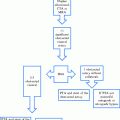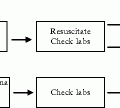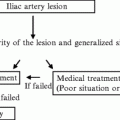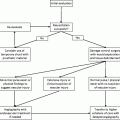Intervention vascular segment
Percutaneous transluminal angioplasty (PTA)
Atherectomy (with/without PTA)
Stent (with/without PTA)
Stent + Atherectomy (with/without PTA)
Iliac
37220
N/A
37221
N/A
Additional Ipsilateral Iliac
+37222
N/A
+37223
N/A
Femoropopliteal
37224
37225
37226
37227
Tibial/Peroneal
37228
37229
37230
37231
Additional Ipsilateral tibial/peroneal
+37232
+37233
+37234
+37235
Cervical carotid artery stenting with (37215) or without (37216) distal protection is special in that this represents a divergence from component coding. The work associated with catheter placement, selective imaging of the carotid arteries, placement of the stent, and use of a protection device are all bundled into one code.
7 Vascular Lab Coding
Noninvasive vascular lab testing can be broken down into four main categories: arterial physiologic, arterial ultrasound, venous physiologic, and venous ultrasound. Many insurance carriers consider certain specific diagnoses appropriate for payment within each category. One cannot just attach a procedure code to a payable diagnosis code. The clinical symptoms accompanying that diagnosis must be documented in the medical record.
Noninvasive arterial physiologic testing includes functional measurement procedures such as transcutaneous oxygen tension plethysmography (TCPO2), segmental Doppler waveform analysis, or pulse volume recording (PVR). Use of a handheld Doppler by itself for determination of an ankle-brachial index is considered part of the physical exam and is not separately reportable. The CPT codes that describe studies in this category are all bilateral. Therefore, unilateral studies necessitate the −52 modifier (reduced services) and will usually require documentation.
Stay updated, free articles. Join our Telegram channel

Full access? Get Clinical Tree







